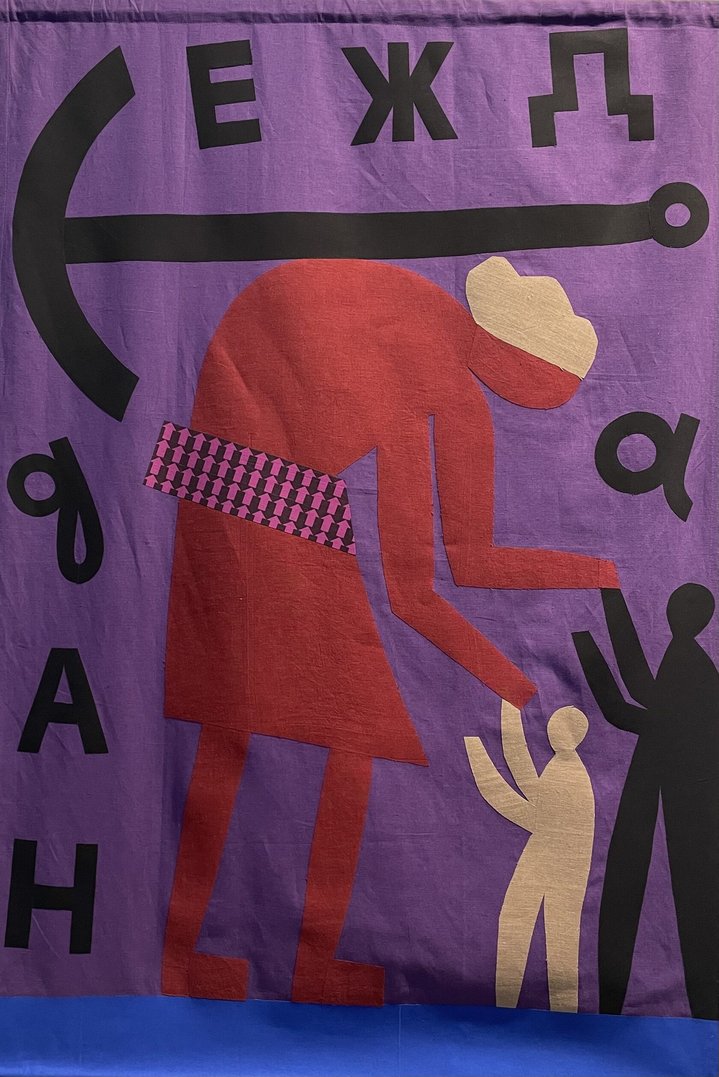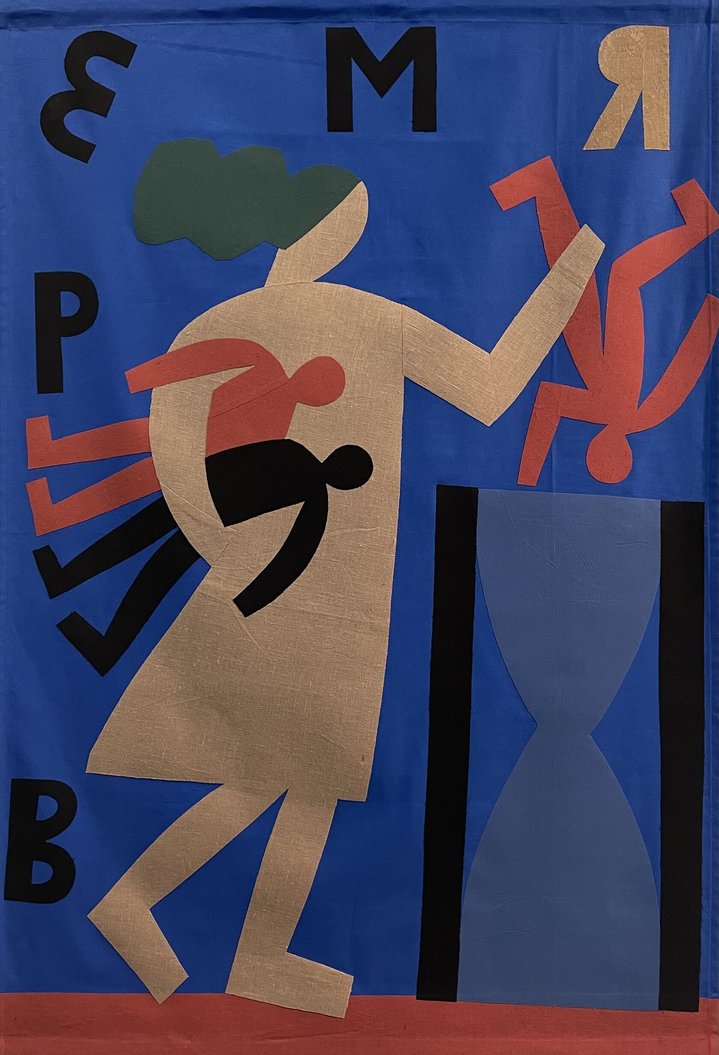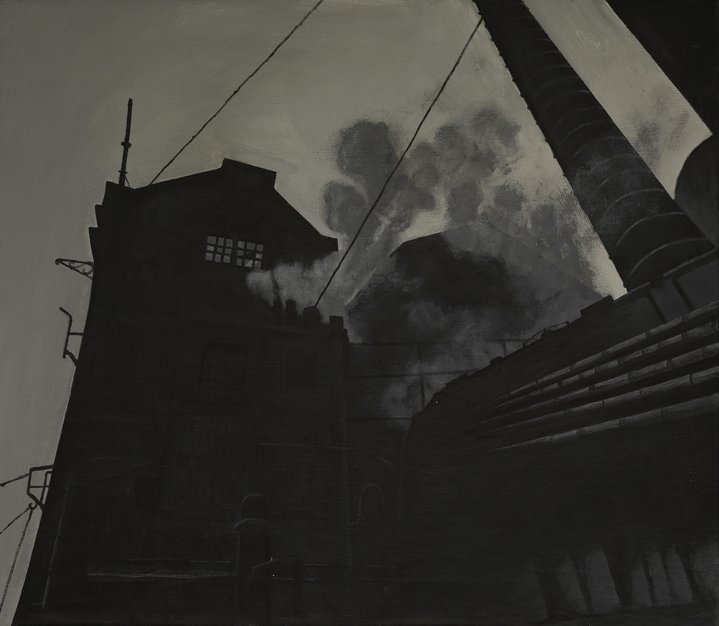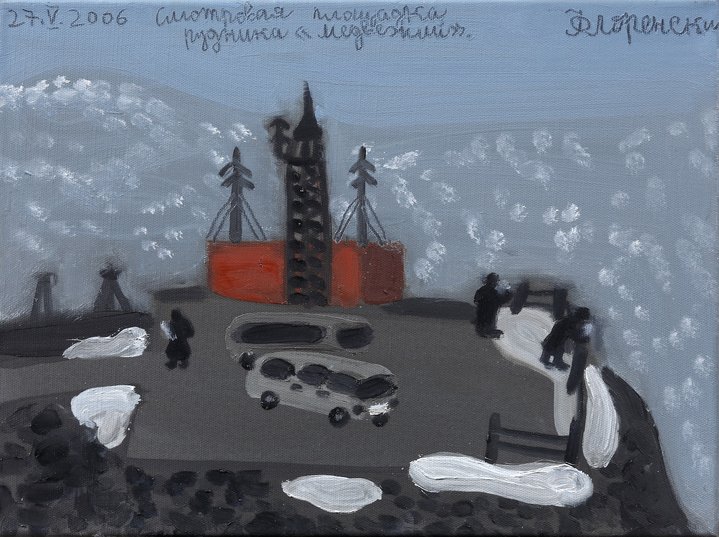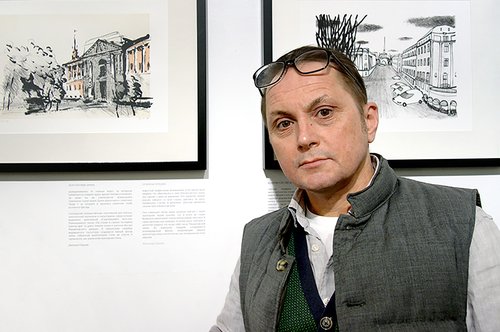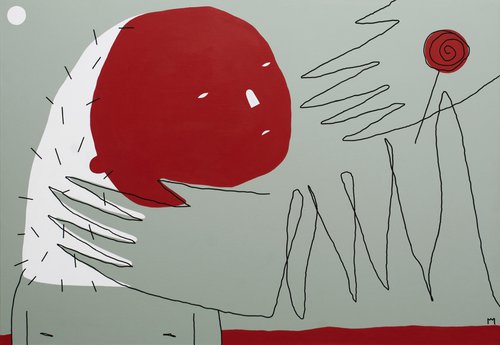The Florensky artistic dynasty brings the classics back to life
Three exhibitions of members of the Florensky clan, a prolific family of Russian artists, have opened in Moscow at the same time. The roots of their visual language can be traced back to an early Soviet art group fascinated by all things classical.
Four Titians, three Rembrandts, three Delacroix and so on, a selection that could form the basis of a good art collection. In addition, there are famous works such as ‘Carl Bryullov. The Horsewoman’ or ‘Paul Rubens. The Coat’. Only, it’s no coincidence that the artists’ names are in inverted commas next to the titles of the works. Because here we are talking about the exhibition of Alexander Florensky (b.1960) in the Museum of Russian Lubok and Naive Art in Moscow.
Alexander Florensky began to create his own personal museum in the 1990s, copying old master paintings in his own style for the ‘Russian Album’ project. The current exhibition presents his liberal re-tellings of mostly Western art. At the Totibadze Gallery his wife Olga Florenskaya (b. 1960) addresses allegorical themes through fabric appliques. Her work, ‘Time’ is not a repetition of Titian's ‘Allegory of Time’, and her ‘Melancholia’ does not echo Dürer's ‘Melancholia’, but addresses a circle of themes that have long been part of European culture: ‘Hope’ is associated with the anchor of salvation, while ‘Justice’ is personified by a blindfolded woman with a sword. The interest in reading classical art brings both exhibitions closer together. The artists from St Petersburg are a couple in both art and life and for the last decade and a half have been living between Russia and Georgia.
It conjours up how ‘quiet artists’ of the Communist era used to turn to the Old Masters to escape from the reality surrounding them. Alexander Florensky recalls the works of Sergei Romanovich (1894 –1968). And the Kovcheg Gallery in Moscow currently has on show pastels and watercolors by Arthur Fonvizin (1883–1973), the artist's replicas of museum specimens, from which it is clear that another interpretation was the possibility of depicting the nude body, sanctified by tradition, in the Soviet atmosphere of ethical rigorism and moral suspicion. (The exhibition is open from 2nd of November until 27th of November) Romanovich and Fonvizin were both members of the Makovets art group (1921–1927). One can assume that the redrawing of the classics was indirectly linked to the group's ideologist Vasily Chekrygin (1897–1922) and his idea of the ‘Resurrection Museum’. Art was perceived as, literally, a means of raising the dead.
Father Pavel Florensky (1882–1937), a Russian Orthodox priest and noted philosopher was the inspiration for Makovets, and one of the members of the group was his sister, Raisa (1896–1932). Another of his younger sisters, Olga (1890–1914), was a professional miniature painter. Pavel Florensky, a priest, philosopher and art theorist, left his mark in many disciplines: from ethnography (one of his first scientific publications was on the remnants of phallic cults in Georgia) to mathematics (his book, ‘Fiction in Geometry’, was about a new understanding of the plane). He published his paper ‘The Lithurgy as a Synthesis of the Arts’ in the first issue of the group’s magazine Makovets (1922). Father Pavel also collaborated with the RAKhN-GAKhN, a scientific institution, one of whose main goals was the development of ‘synthetic art criticism,’ and was a professor at VKhUTEMAS, the main educational institution of the Soviet Avant-Garde.
In their manifesto, the Makovets artists proclaimed ‘strict continuity with the greatest masters of the past.’ In a polemic with the avant-garde and the salon at the same time, the Makovets artists turned to the lubok, Russian traditional folk prints. Alexander Florensky may be called the successor of Makovets, decades after the association ceased to exist. He combines both traditions: an interest in the folk graphics and continuity with the masters of the past.
The Florensky couple’s range of interests extends from painting to applications, from installations to animation. They both graduated in ceramics from the Mukhinsky College (now the Stieglitz Academy) in St. Petersburg and in 1985 became the founders of the Mitki (1985–1995), one of the most famous art groups of the Perestroika period. The Mitki actualized signage, obscene street graffiti, group singing and other forms of folk art in the broadest sense of the word.
Yet, besides the well-know couple there are many more members of Florensky tribe active on the Russian art scene today. Anna Florenskaya (b. 1974) is the sister of Alexander Florensky and makes dolls. Their mother Natalia Florenskaya (b. 1939) is an illustrator. Alexander and Olga's daughter Ekaterina Florenskaya (b.1986) is a graphic artist. But all of them are also engaged in painting. All are actively exhibiting. They are a family clan. And all are distant relatives of father Pavel Florensky.
Ivan Florensky (b. 1993) opened his first major solo project at the Fabrika art centre in Moscow. This is a multimedia project dedicated to the factory chimney that combines painting with installation and sound art. Ivan, son of the artist Vasily Florensky (b. 1967) represents another, Moscow branch of the family. Ten people of art in one century seems to be an absolute record among Russian artistic dynasties, if not anywhere.
Alexander Florensky. Favourite Paintings
Museum of Russian Lubok and Naive Art
Moscow, Russia
September 9 – December 28, 2022
Olga Florenskaya. Allegories
Moscow, Russia
October 18 – December 4, 2022
Ivan Florensky. Overcoming Damage
Fabrika Centre for Creative Industries
Moscow, Russia
November 8 – December 8, 2022









